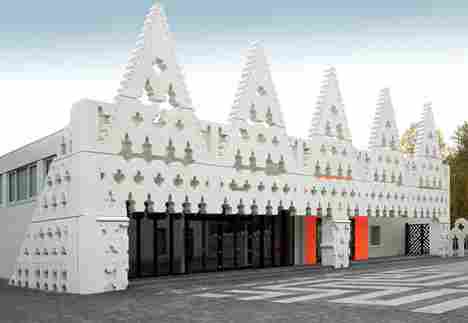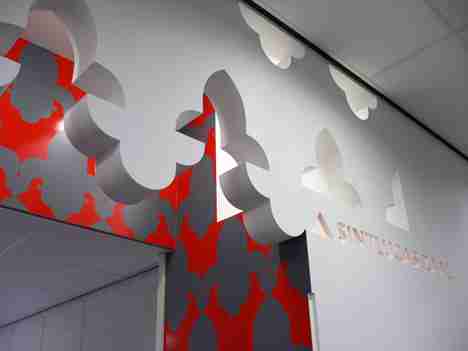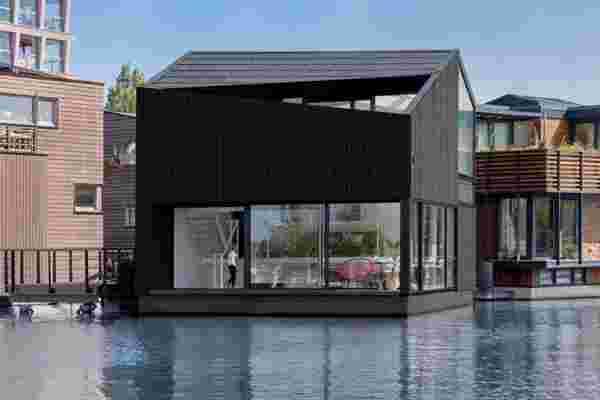
Amsterdam is no stranger to floating homes , or even floating villages for that matter. There’s a new kid on the block though and he seems to be making waves. Taking over a previously industrial part of the city, Space&Matter recently planned a new floating village in Amsterdam that aims to become Europe’s most sustainable floating community. The new urban ecosystem , called Schoonschip is currently home to 46 households, which float atop a previously disused canal. Each household has a lot of creative control when designing their very own floating home, appearing like an urban architectural quilt floating on top of the water. The designers at i29 Architects recently revealed their own client’s rendition of the floating home, which has by now both drifted and settled into its new neighborhood.
The team at i29 Architects wanted to maximize their client’s living space indoors, so a clever combination of pitched roofing and dramatic diagonal coping gives the floating home high ceilings, a striking exterior display, and protects the roof from heavy rainfall. From the start, architecture and design went hand in hand for the team at i29 – one influencing and catering to the other, and vice versa. Further on this, i29 says, “Architecture and interior design are always intertwined and connected on each level to make a clear and unified experience. The floating home exterior design is the result of a space extensional study within the interior and vice versa.”
Inside, the floating home’s three floors are connected by an atrium, which extends through all three levels. Just above water-level, a split connection in the atrium’s middle levels leads to a loggia terrace for unobstructed views of the canal. Moving throughout the floating home, windows and glass walls cater to the views outside, which hop from window to window and floor to floor. While the basement offers direct water-level views, the living room’s sliding glass doors unfurl, bringing the home’s lounge and kitchen to the water’s edge. Then, moving to the top floor of the home, an additional loggia terrace opens up to views of the canal’s west side.
The floating neighborhood, which over 100 residents call home, is connected by a single jetty that works as a social gathering place above ground, while an underground jetty distributes green energy, connecting each household on an energy sharing grid. Water lines trace each jetty for each household to use and re-use all the water available to them. Even on a tight budget, i29 Architects pulled off both an energy-efficient home and one that’s not only aesthetically but purposefully eccentric. After all, this is a floating neighborhood.
Designer: i29 Architects x Space&Matter
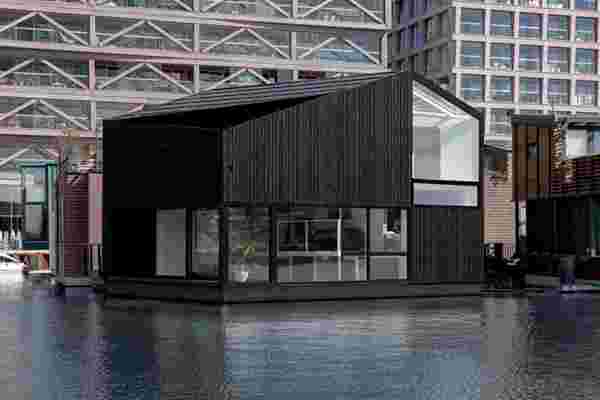
Opus Tower by Zaha Hadid
Hadid has described the Opus as one of her keynote designs. The floor plan for the development is 1.7million sq ft and has over 22 stories of commercial and retail office space. The design includes 17 levels of office space, four levels of retail, a top floor relaxation area and roof garden as well as a five-story basement. The new 22-storey cubed shaped mixed use building has been described as setting new standards in a global context and makes a unique contribution to the business bay section of Dubai. Construction on the project is due to start later this year with an expected completion date of 2010.
Designer: Zaha Hadid
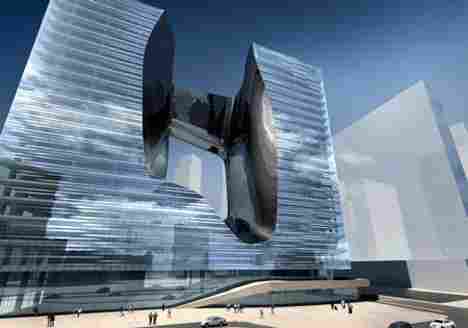
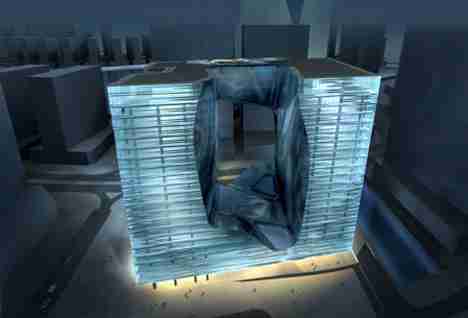
Sint Lucas Art Academy by Art Studio
Architect Fat was appointed in 2002 to create a new identity for the school and rationalise spaces inside and outside. The existing unremarkable 1960’s buildings are to be given a strong,colourful and unusual new external identity through the addition of decorative screens, surface treatments and signage. These elements communicate the inner life of a creative educational institution and enhance the outdoor spaces between the various existing buildings.
The main thrust of the interior proposal is to increase the sense of identity and legibility in the main circulation spaces. This is to be achieved by integrating communal activities, such as study rooms, dining facilities and exhibition spaces, with the main corridors. These become more like streets with activities along them, fostering a greater sense of activity and exchange within the building. Existing circulation spaces will be made more generous with new connections to be more obvious to everyday users and visitors alike, further enhanced with new signage. The 3.5 million phased project was completed in mid 2006.
Architect: Art
